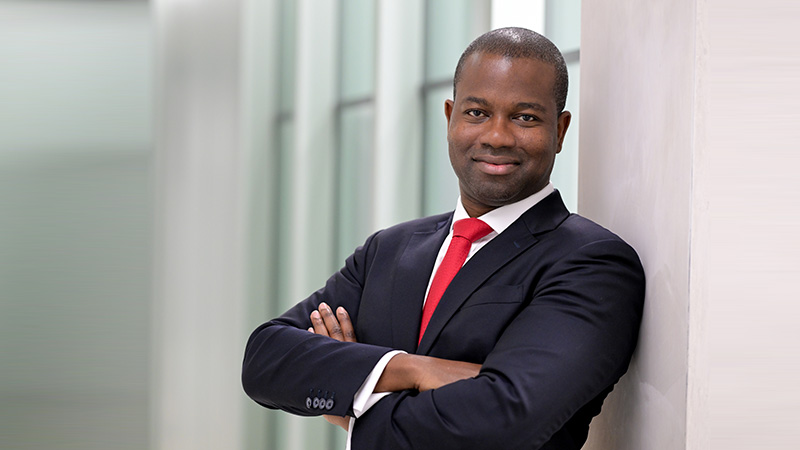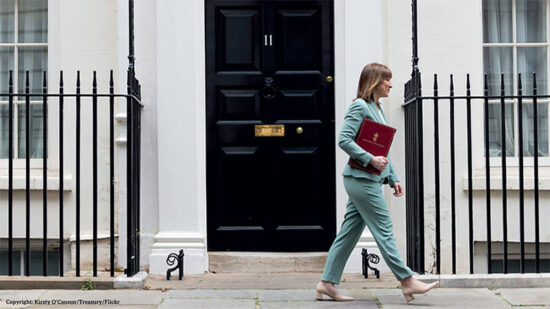In an environment where markets are being driven increasingly by non-consensus political decisions, investors need to ensure their portfolios are diversified and resilient rather than being overly focused on more concentrated asset classes, sectors, or regions.
In my last note I talked about the danger of extremes in the market, a phenomenon we call ‘fat tails’, stemming from the political policies coming out of the US, namely the wave of Executive Orders and tariffs Donald Trump has imposed.
See also: Trump’s Liberation Day: How to TILT-proof your portfolio
I think it is fair to say that we have now seen this come to pass, with stockmarkets diving globally in the wake of Trump’s “Liberation Day” tariffs, and this will make investors very nervous about what to expect next. At the time of writing this, the S&P 500 was down 16.5% year-to-date, while the Nasdaq had lost almost 21%.
While these policies have led to stockmarkets becoming more volatile, the real difficulty is trying to work out if they will remain fully implemented, and what the retaliation will be.
History tells us there will always be retaliation, and what this all leads to is a spiral of uncertainty within markets as people try and digest what the implications will be on businesses. The major risk is that it simply causes paralysis as companies adopt a ‘wait and see’ approach, namely putting a pause on capital expenditure spending and investing less for the future. Why would you make significant hiring decisions today, when the future is so uncertain?
There is, however, light at the end of tunnel. The one positive is that set against this uncertainty we expect governments to step in, like we saw in Germany with the announcement of the largest fiscal policy package since reunification. At the same time the Federal Reserve recently paused its interest rate hikes, and it is clear we are going to see more reactions from policymakers as they try and steer us through this uncertainty.
Bonds
So how are we reflecting this within our current asset allocation? Given our views on the global economy right now are mixed, it’s our view that given where yields are, and with inflation falling (although still remaining elevated), investors might want to hold more bonds than they typically would. The key is to spread this exposure across a number of different regions, and that includes the largest bond market in the world, the US, but also Europe and Japan.
Of course, the big risk in holding bonds is we get an inflation spike, and Trump’s tariffs could be a catalyst. As such it’s important to get the right mix between nominal and inflation-linked bonds. Right now, all things being equal, one may consider a greater tilt towards the latter given the possible inflation spike and falling growth which could create a short-term stagflationary environment. This, of course depends on an investor’s inflation sensitivity.
See also: Markets bounce on Trump trade deal hopes
What are the other big diversifiers investors can look to? One is the Japanese yen which, despite the year-to-date moves, looks cheap at the moment. When markets are volatile, this is a currency which can provide downside protection, so looking at how much yen you have in your portfolios, and making some adjustments at the edges, makes a lot of sense.
Then we turn to commodities, which in volatile market conditions tend to give investors diversification relative to the rest of their assets. However, it’s quite difficult to justify holding a broad basket of commodities if you adopt the belief that growth is set to slow. At the same time, one of the hardest things with any commodity is trying to assess whether it currently reflects fair value, and in the absence of having cashflows, it’s always difficult to evaluate and measure their overall levels of devaluation.
Equities
When it comes to equities, one area that has looked interesting for some time is the UK. It’s a region known to be quite defensive, with 80% of the revenues from FTSE 100 companies coming from overseas. This means that as a protector within portfolios, relative to other independent assets, the UK stacks up well. At the same time valuations look attractive, with the UK only being this cheap for just 20% of its history.
It is a very much unloved asset class. What know is we get extreme negative sentiment, which has been the case since Brexit, but it does tend to reverse. We have been overweight in the UK for about six months, but we have been increasing that positioning with a bias towards large caps.
Europe, led by Germany, also appears to have much more positive momentum. We believe the recent German fiscal package could increase Europe’s prospects considerably, so we have increased our weighting to the region. At the same time, we have reduced our allocations to the US and our overweight to emerging markets.
See also: Dan Kemp: With tariffs shaking markets, what do investors need to consider?
In all this, I think what is most interesting is that when we see big, almost seismic changes in the market, eventually you return to the fundamentals. Over the past decade, the weight of investor money has gone long the US, technology and the dollar, and short the yen, the UK and small caps.
Where we stand today is that the short-term vulnerabilities are in those leveraged and expensive consensus trades that have worked so well, hence the need to be more diverse rather than trying to time the market and predict what politicians are going to do next.
At the same time, while uncertainty is rising it’s important investors don’t stand still. Right now we are positioning portfolios to remain resilient, with a greater focus on defensive areas and diversified opportunities outside the US.
As always, maintaining a long-term perspective is key – staying diversified through market cycles can help investors benefit from the opportunities that emerge along the way.
To quote Joe Wiggins, our investment director at SJP: “Markets are noisy, but successful investing is about focusing on what matters and ignoring what doesn’t.”
Justin Onuekwusi is chief investment officer at St. James’s Place








